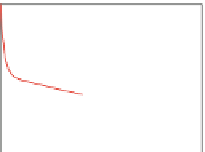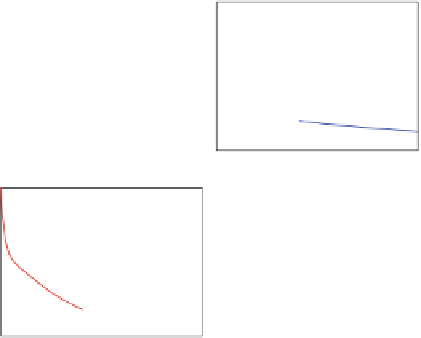Biomedical Engineering Reference
In-Depth Information
a
b
1
D
= 0
D
= 0.1
m
eV
D
= 0.2
m
eV
D
= 0.3
m
eV
D
= 0.5
m
eV
occupation
n
10
n
01
0.8
D
= 0.2
m
eV
V = 0
0.6
0.4
0.2
0
c
d
1
occupation
n
10
n
01
occupation
n
10
n
01
0.8
D
= 1
m
eV
D
= 0.4
m
eV
0.6
0.4
0.2
0
0
2
4
6
8
100
2
4
6
8
10
t [ns]
t [ns]
Fig. 9.14
Vacuum-induced coherence effect in a system of two QDs. (
a
) Exciton occupation of
the DQD system. (
b
)-(
d
) Exciton occupation of the DQD system and occupations of the localized
states
|
10
(
n
10
)and
|
01
(
n
01
) for different energy mismatches [
123
]
a
b
1
V = 0
V = -1 meV
V = -2 meV
V = -4 meV
V = -8 meV
V = 0
V = -1 meV
V = -2 meV
V = -4 meV
V = -8 meV
0.8
D
= 1 meV
0.6
D
= 1 meV
0.4
0.2
0
0
2
4
6
8
10
0
2
4
6
8
10
t
[ns]
t
[ns]
Fig. 9.15
The exciton occupation for a localized initial state
|
01
(
a
)and
|
10
(
b
)fora
technologically achievable energy mismatch
Δ
=
1 meV and for few values of coupling between
the dots [
123
]
with a technologically achievable transition energy splitting on the order of meV.
Full stabilization of the exciton trapping is impossible for nonidentical systems;
therefore, even in strongly coupled DQDs the quenching of the population always
takes place, but the decay of the “trapped“ state is considerably reduced. For a
weaker coupling the decay of the exciton occupation becomes faster, but still the
exciton lifetime is much longer than for uncoupled dots (Fig.
9.15
).
In contrast to the case of identical QDs, the evolution of coupled dots depends
on the choice of the initially occupied dot. For non-vanishing coupling between the
dots, the initial localized states may be expressed as non-equal combinations of the
eigenstates of the exciton Hamiltonian (
9.30
)and(
9.31
),








































































































































































































































































